5 Most Important Mythical Creatures In Norse Mythology
Norse mythology (or Viking mythology) consists of the myths, traditions and beliefs of the pre-Christian people who settled mainly in Iceland. Generally speaking, Norse mythology is full of interesting stories and myths, thus mythical creatures could not be missing from it. Read below about the 5 most important mythical creatures in Norse mythology.
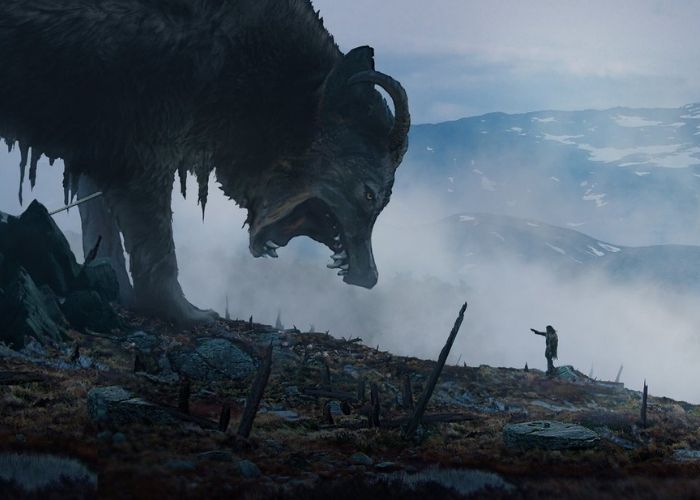
Fenrir
Fenrir was one of Loki's three children with Angrboða, coming from giants (jötunn), and played an important role in Norse mythology. This wolf – Fenrir - was remarkable in size and strength.
Fenrir, disappeared when the war of the gods "Æsir και Vanir" started and signaled the end of Ragnarok.
Fenrir grew speedily in size and soon became a jötunn God among wolves. To protect Æsir from the terrible fate - that they all knew would one day come - they decided that Fenrir should be restrained.
Three kinds of bonds were forged before the gods succeeded in limiting the wolf.
However, those bonds did not last long, as Fenrir's sudden shakes broke the chains. The gods knew they needed skills beyond their own. Odin, Æsir’s leader, sent a message to the vicious dwarves of Svartálfaheimr, who lived in the black elves’ underworld, and they agreed to build a chain strong enough to prevent the giant wolf from escaping.
The dwarves soon introduced Odin to Gleipnir, which was a bond made up of six mythical components: the sound of a cat's feet, the roots of a mountain, the tendon of a bear, the beard of a woman, the breath of a fish and the saliva of birds.
Fenrir the wolf is still imprisoned for a limited time on a very distant island away from other beings, until the fate of the gods is met.
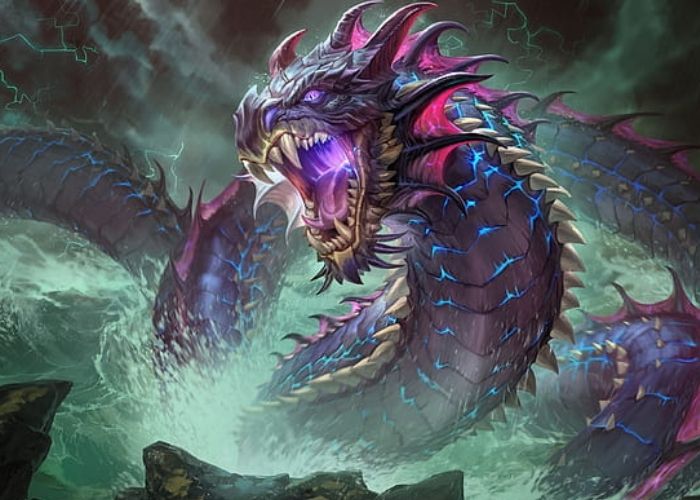
Jormungandr
Jormungandr was a child of the god Loki and Angrboda. It was a snake and was many meters long since a very young age. Its mouth drooled deadly poison while its eyes were light green and his gaze was full of evil.
The gods, feared of its presence, sent Jormugandr to the depths of the oceans, where there was plenty of space to move and food to feed.
So, when Jormungandr left for the bottom of the oceans, it grew so much that its body hugged like a ring all over the earth and it had to place its head on its tail. When its length was stabilized, it changed its name and became the world snake, Midgard Serpent.
During Ragnarok, Jormungandr is destined to meet Thor and they will slay one another, and the serpent will bob up from underwear and poison both the sky and the ocean.
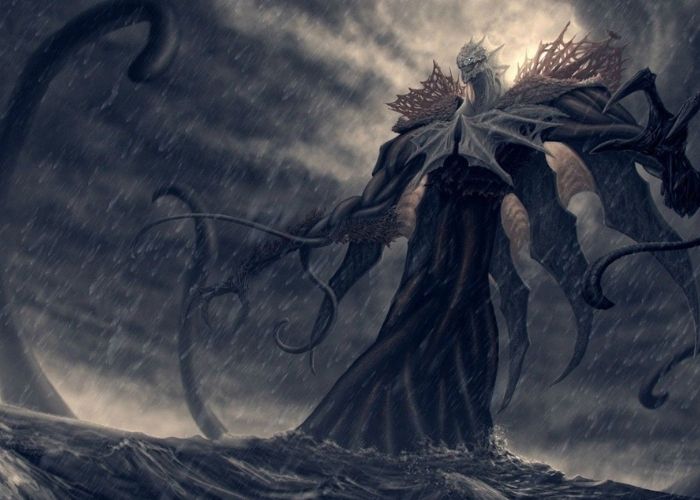
Kraken
According to Norse mythology, Kraken is a giant sea monster that attacks ships. It is so big, a mile long, that many confused it with an entire island. It makes its first appearance in a 13th-century Icelandic saga, Orvar-Oddr.
Specifically, there is a reference to two monsters, Hafguga and Lyngbakr. The first is Kraken's forerunner. There is also a reference to it in scientific texts. It is found in the first edition of Systema Naturae in 1735. This is a classification book of all living organisms. Its author is the Swedish doctor and botanist Carolus Linnaeus, who classified the monster as a cephalopod under the scientific name Microcosmus Marinus.
In subsequent editions of the book, the monster was removed. In 1746, Linnaeus wrote another book, Fauna Suecica, in which he described it as a unique monster that lives in Nordic seas. Many historians attribute the legend to the appearance of a huge squid that is 18 meters long. The Kraken is also been seen in Pirates of the Caribbean movie.
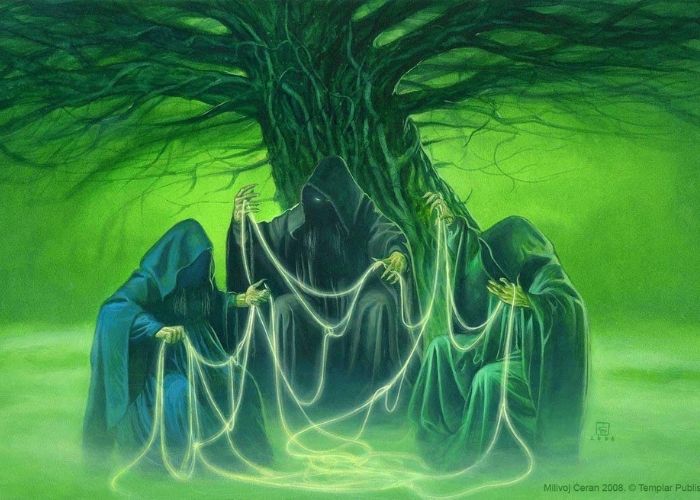
Norns
The Norns of Norse mythology are three and their names are Urðr (meaning what has been done), Verðandi (meaning what is being done) and Skuld (meaning what should be done).
The Norns live under the roots of Yggdrasil, the world tree in the center of the world (although some myths report they live above Bifrost Bridge), where they weave the embroidery of fate. Every human life is a thread on their loom, and the length of the thread is the length of a person's life.
So, the three virgins Urðr, Verðandi and Skuld represented the past, present and future respectively. They lived near a sacred city, the Ord, and from there determined the fortunes of both men and gods. In short, they were the most powerful deities in Norse mythology.
They have even predicted the death of Odin the Allfather, which will take place in Ragnarok.
Everything has its purpose in the Norse religion: even the gods have their own threads, but the Norns do not reveal them to them. This submission of the gods to a power beyond their control and the consequence that they will also have an end are major topics in the literature surrounding Norse mythology.
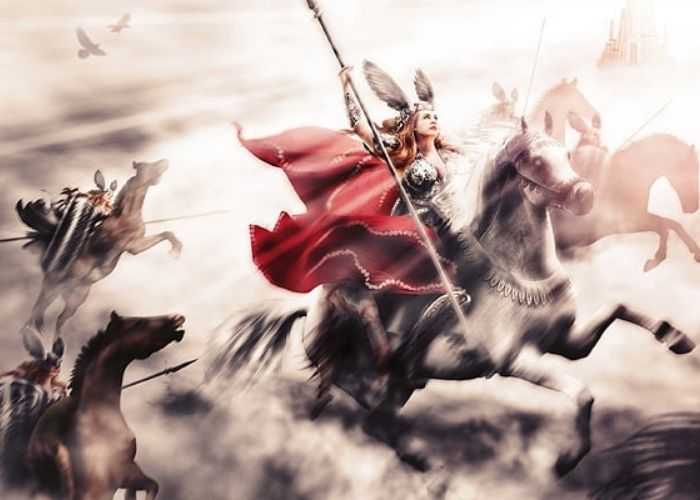
Valkyries
The Valkyries are foster daughters of Odin and their name mean "the ones that choose the dead", but they are also given other denominations, such as "virgins of battle", "shielded virgins", "virgin-swans" and "virgins of desire".
They are depicted as beautiful, usually blonde and blue-eyed, warlike females on haughty and strong horses, dressed in military uniform. Sometimes, they are seen to be wearing clothes decorated with swan feathers.
They fly over the battlefield and decide who will die during it. Freya (who always picks up first) takes half of the dead and the Valkyries take the other half to Odin, in Valhalla, to fight at his side when Ragnarok comes.
At Odin repasts, they serve the guests, filling their cups with mead. Sometimes, Odin allows them to disguise into beautiful white swans, but if one sees one of them at the time of their disguise, then they will transform into a common mortal and will never be able to return to Valhalla again.
According to another view, whoever managed to capture a Valkyrie or steal her swan disguise could extract a wish from her.
Norse mythology is full of monsters and creatures. Do you agree with the list above? Let us know in the comments.
